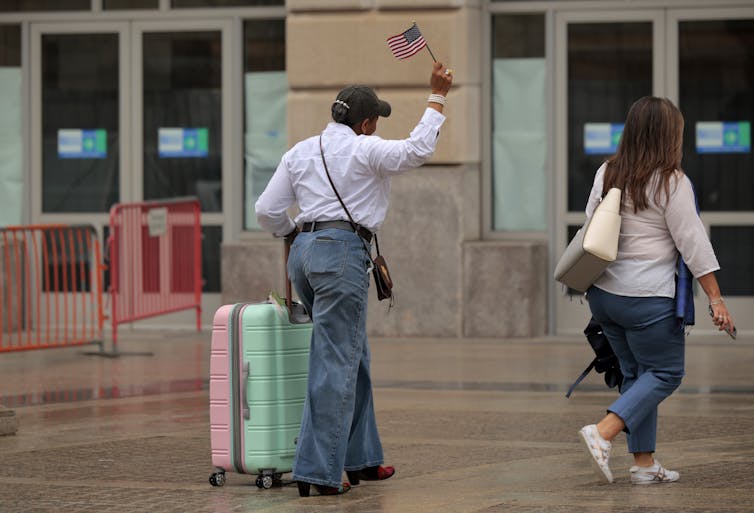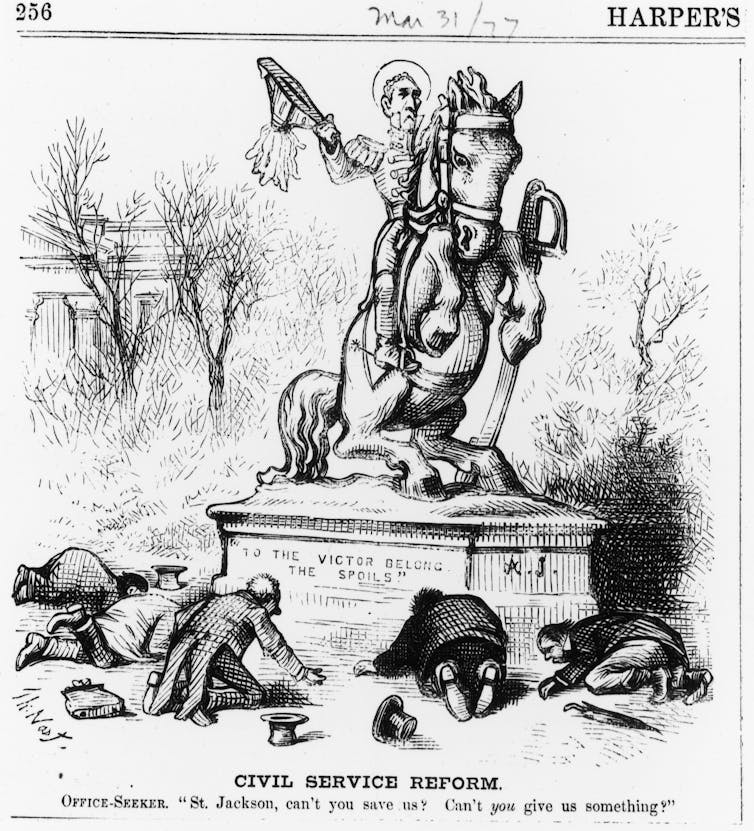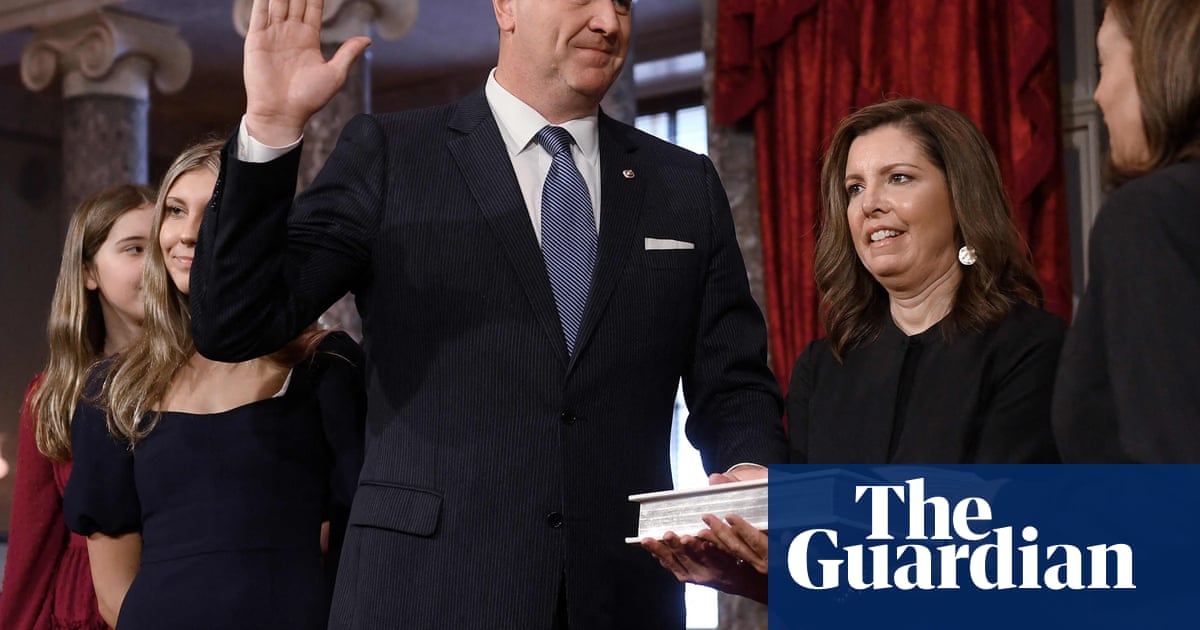The Trump administration is moving ahead with policy changes that would make it easier to fire some federal workers.
The Office of Personnel Management, or OPM, filed proposed regulations in the Federal Register on April 23, 2025, that would reclassify about 50,000 career civil servants as “at-will” employees.
Trump’s first administration attempted similar changes, known as by some as Schedule F but those plans were not implemented.
An estimated 2% of nearly all of the 3 million federal workers would then experience a shift in how the government classifies their jobs, renaming their classification “Schedule Policy/Career.”
It is not entirely clear which workers will be reclassified, since the process is largely at Trump’s discretion.
“This will allow agencies to quickly remove employees from critical positions who engage in misconduct, perform poorly, or undermine the democratic process by intentionally subverting Presidential directives,” the Office of Personnel Management proposal reads.
Trump supports these changes and says they can help remove corrupt or unqualified workers. Critics maintain that the changes will allow the administration to fire federal employees the administration sees as not supporting its agenda.
Trump is expected to sign another executive order in the next few weeks that would formally reclassify certain federal job positions as Schedule Policy/Career.
Here are three stories from The Conversation’s archive about the rights of federal civil servants.

1. When a president fired half of the civil service
Before Trump was elected to a second term in November 2024, he promised he would fire as many as 50,000 civil servants and replace them with people loyal to him.
Nearly 200 years before that, President Andrew Jackson took office in 1828 and promptly fired about half of the government’s civil service. He replaced these employees with political loyalists. This shift became known as the spoils system.
“The result was not only an utterly incompetent administration, but widespread corruption,” write Sidney Shapiro, a professor of law at Wake Forest University, and Joseph P. Tomain, a professor of law at the University of Cincinnati.
Samuel Swartwout, for example, was a Jackson former Army friend whom he selected to serve as collector of customs in New York. The job was well paid and prestigious, and “involved collecting taxes and fees on imported goods that arrived in the nation’s busiest port.”
“But a congressional investigation showed that Swartwout had stolen a little more than US$1.2 million during his tenure, or about $40 million in today’s dollars,” Shapiro and Tomain write.
Jackson also found that he could not legally influence hiring at all federal agencies, including the U.S. Post Office, and easily place his own high-level appointees there.
Today, some federal workers, including U.S. Border Patrol agents, would be exempt from Trump’s reclassification plans.

2. Federal workers have protections against partisan attacks
Federal workers have had federal legal protections for their hiring and firing in place since the 1880s. This has helped federal employees thwart moves by presidents like Jackson aiming to “control a lot of workers who would serve the president,” and not the American people, according to James L. Perry, a scholar of public affairs at Indiana University, Bloomington.
The 1883 Pendleton Act ensures that “government workers are hired based on their skills and abilities, not their political views,” Perry says. Congress updated this law in 1978 with the Civil Service Reform Act, which provides additional “protections for workers against being fired for political reasons.”
“Those rules cover about 99% of staff in the federal civil service. Currently, there are just about 4,000 political appointees,” Perry told Jeff Inglis, an editor at The Conversation U.S., in February 2025.
Perry points out that the Trump administration’s proposed restructuring would also likely be unpopular among Americans. As many as 87% of Americans have said they want a merit-based, politically neutral civil services, according to Perry
.
3. A precarious moral and ethical tightrope
Leading into Trump’s second term, federal government workers were advised by colleagues to “stay calm and keep their heads down,” and draw minimal attention to their work. This includes not directly using terms like climate change and human rights, which they correctly thought the administration would target, according to Jaime L. Kucinskas, a sociologist at Hamilton College.
There were some unknowns about how Trump’s second administration would act. But many civil servants also likely understood that “this pressure is real” under the new administration and could affect their day-to-day work, Kucinskas writes.
Kucinskas interviewed 66 career civil servants from 2017 through 2020. A number of these workers told Kucinskas that working under the first Trump administration caused their mental health and morale to decline. The experience also worsened their productivity and innovation at work.
“Among a sizable proportion of the people I spoke with, the pressures at work became too much; about a quarter of those I spoke with quit during the first Trump administration,” Kucinskas wrote in January 2025.
Some civil servants chose to not speak openly about their work experiences with the first Trump administration, including mid-level civil service workers who watched as political appointees “fought over policy agendas levels above them,” according to Kucinskas. Other employees tried to simply keep their work moving, regardless of the politics at play.
“Yet, even among those who felt most alone, I found they had many experiences in common with others who also felt isolated in trying to walk a precarious moral and ethical tightrope between their desire to faithfully serve the elected president – under chaotic leadership and insufficient and sometimes questionably legal guidance,” Kucinskas wrote, “and do quality work upholding the law and benefiting the nation and the American public
Read more: Civil servants brace for a second Trump presidency
.”
This story is a roundup of articles from The Conversation’s archives.

 German (DE)
German (DE)  English (US)
English (US)  Spanish (ES)
Spanish (ES)  French (FR)
French (FR)  Hindi (IN)
Hindi (IN)  Italian (IT)
Italian (IT)  Russian (RU)
Russian (RU)  3 weeks ago
3 weeks ago
























Comments